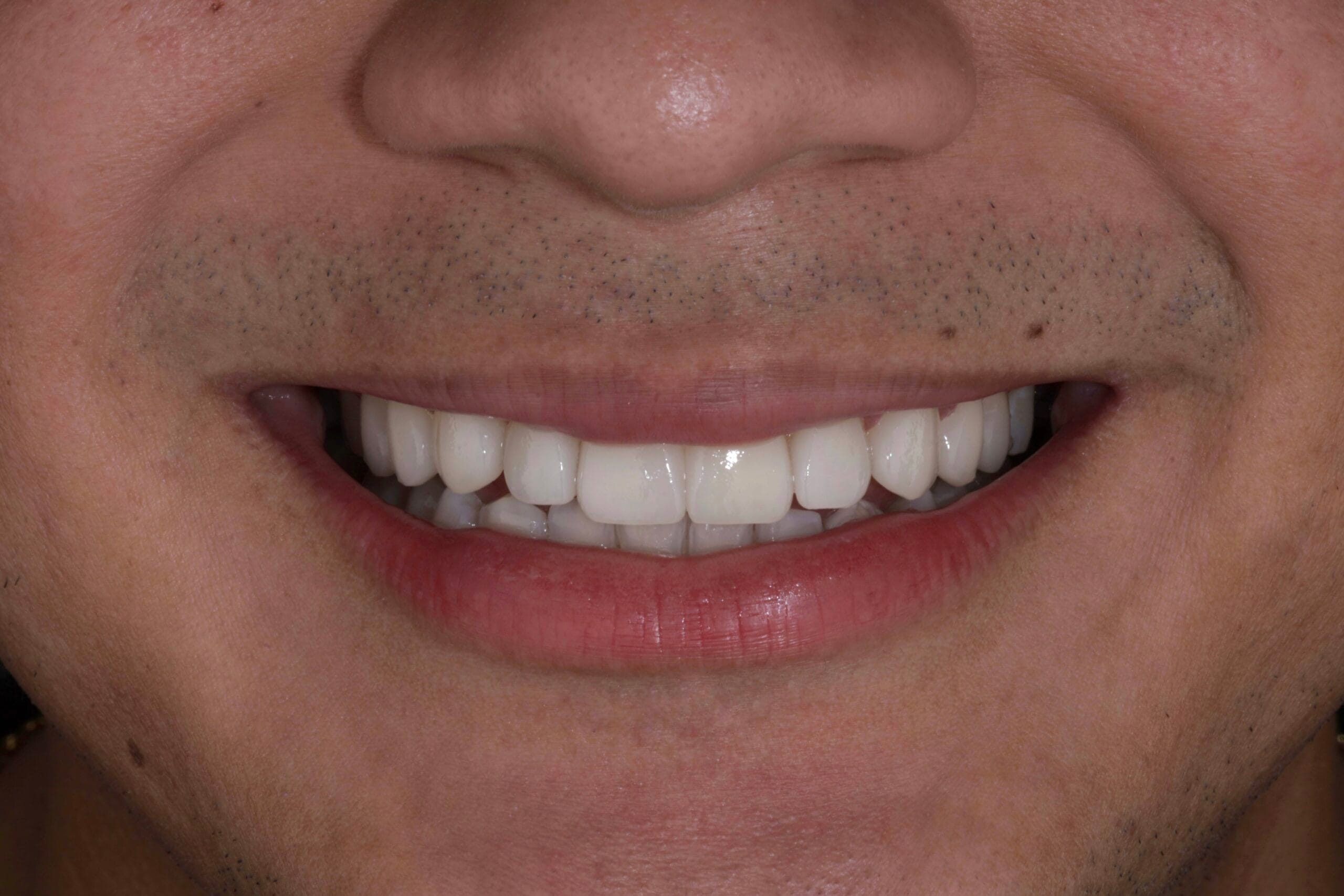
Holman, 29 years old, came to our office with one goal: he wanted to improve his smile without making the change too obvious. His main concern was the color of his teeth, which didn’t reflect the fresh, bright image he desired. Additionally, there were certain details in the shape of some teeth that he wanted to refine, but without losing the natural essence of his expression.
The challenge in his case was to achieve a balance between aesthetics and discretion. For many patients, improving their smile doesn’t mean transforming it completely, but rather enhancing certain aspects while keeping it feeling like their own. To achieve this, we designed a treatment consisting of ten lithium disilicate veneers on the anterior teeth, along with a vertical dimension increase through tabletops on the posterior teeth. The entire process was led by Dr. Paola Zabaleta, with the goal of optimizing aesthetics without compromising functionality or Holman’s natural dental structure.
Lithium disilicate veneers were the ideal choice, as they improve both color and shape without creating an artificial look. Unlike other materials, lithium disilicate has a translucency similar to natural enamel, allowing the veneers to blend seamlessly with the existing teeth. Additionally, its high resistance makes it a perfect choice for those seeking a long-lasting solution with minimal maintenance. Given Holman’s busy lifestyle, this was a key factor. This material also maintains its shade over time and is not affected by staining foods or beverages.


In addition to the veneers, a vertical dimension increase through tabletops on the posterior teeth was performed. This procedure allowed us to gain the necessary space to prevent functional interferences and ensure that the bite remained stable. In many cases, this type of adjustment is essential to guarantee that the result is not only aesthetically pleasing but also comfortable and functionally sustainable in the long term.
One of the most common concerns among patients considering this type of treatment is the fear of excessive tooth reduction. However, thanks to advancements in materials and preparation techniques, lithium disilicate veneers can be made extremely thin, allowing for minimally invasive preparations. In Holman’s case, we preserved as much of his natural tooth structure as possible, ensuring a conservative procedure without compromising the durability of the restorations.


After the treatment, Holman’s smile reflected exactly what he was looking for: an enhanced version of himself without feeling like the change was forced. Now, his color is more uniform and radiant, his teeth have a more harmonious shape, and his bite is stable—all while maintaining the natural look he valued so much.
This case is a clear example that aesthetic dentistry is not always about drastic changes. More often than not, small, well-planned adjustments lead to the most impactful results. At Sonrisa Italiana, we understand that every patient has a unique vision of their ideal smile, and our goal is to make it a reality while preserving their individuality.


Case review written by Dr. Laura Bula, expert in dental and facial aesthetics

